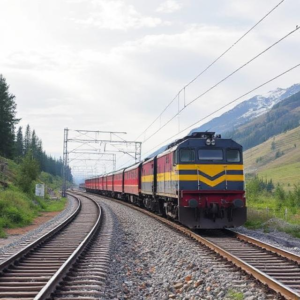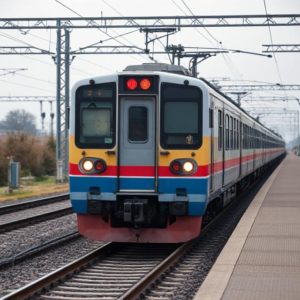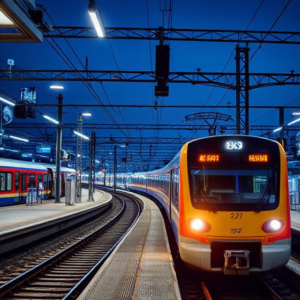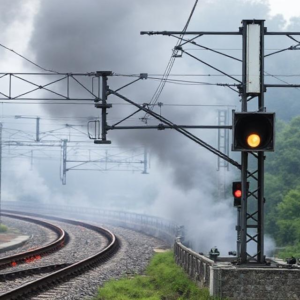Robust Communication Systems in Remote Railway Areas are vital to ensure safe and efficient operation of trains, especially in areas where it’s difficult to set up traditional communication infrastructure. In remote or rural areas, railways face challenges like limited access to networks, harsh weather conditions, and long distances. These communication systems help solve these problems so that trains can run safely, even in these challenging environments.
Let’s break it down in simple terms:
1. Why Are Robust Communication Systems Needed in Remote Areas?
In remote railway areas, trains still need to operate safely, even though there may be:
- Limited mobile networks or internet access.
- Harsh weather like storms or snow.
- Large distances between stations or towns.
Traditional communication methods may not work well in these areas, so a robust communication system is needed to make sure everything runs smoothly.

2. What is a Robust Communication System?
A robust communication system is one that is reliable, even in difficult conditions. It ensures that train operators, control centers, and station workers can stay in touch with each other, no matter where the train is located.
This system uses different types of technology to make sure communication doesn’t break down, even when the environment is challenging.
3. Key Technologies in Robust Communication Systems
Here are some of the main technologies that help provide reliable communication in remote railway areas:
a. Satellite Communication
- What It Is: Satellite communication uses signals sent from satellites in space to transmit data to the train or control center on the ground.
- Why It’s Useful: Even in areas with no mobile coverage or landlines, satellites can provide a stable connection for communication. This is especially useful in remote regions, where traditional cell networks don’t reach.
- How It Works: The train uses satellite dishes or receivers to send and receive data. This allows the train crew to communicate with the control center, get real-time updates, and send emergency alerts if needed.
b. Radio Communication
- What It Is: Radio communication involves using radio waves to send messages between the train and the control center or between different stations.
- Why It’s Useful: Radio systems can cover large areas, making them ideal for remote locations. They don’t require cell towers or internet connections.
- How It Works: Trains are equipped with two-way radios that allow direct communication with other trains or the central control station. This is helpful for coordinating train schedules and ensuring trains stay on the right track.
c. Mesh Networks
- What It Is: A mesh network is a type of wireless communication network where multiple devices (like trains, stations, and control centers) act as nodes that pass information to each other.
- Why It’s Useful: Mesh networks are particularly strong in remote areas because they don’t rely on a central hub. The devices communicate with each other and form a network that can cover larger areas, even when some parts of the network are out of range.
- How It Works: Each device, whether it’s a train or a station, can send and receive information from other devices nearby. If one train or station can’t connect to the control center directly, it can pass the information through another train or station.
d. Fiber Optic Cables
- What It Is: Fiber optic cables are high-speed cables that carry large amounts of data using light signals.
- Why It’s Useful: Fiber optics are highly reliable and can handle large amounts of data over long distances without losing signal quality.
- How It Works: These cables are often used to connect remote railway stations and control centers, especially in areas where satellite or radio communication is not enough. Fiber optics can be laid down along the railway tracks to ensure fast and stable communication.
e. LTE (Long-Term Evolution) Networks
- What It Is: LTE is a type of high-speed mobile network commonly used for internet and voice communication. In remote areas, it can be used to provide reliable communication for trains and stations.
- Why It’s Useful: LTE can be installed in areas where traditional mobile networks are not present. It ensures smooth, high-speed data transfer between the trains and control centers.
- How It Works: Trains are equipped with LTE receivers that communicate with LTE base stations located along the tracks. These base stations provide coverage for communication, even in remote locations.
4. Benefits of Robust Communication Systems in Remote Areas
- Safety: Trains can stay in constant contact with the control center, which allows quick responses in case of emergencies, like a breakdown or obstruction on the tracks. The system can also track trains in real time to avoid accidents.
- Operational Efficiency: Communication systems help manage train schedules, track conditions, and ensure smooth coordination between stations and control centers, reducing delays and improving overall efficiency.
- Real-Time Data Sharing: The train can send updates on its position, speed, and operational status, allowing operators to monitor and control train movements even from a distance.
- Continuous Communication: In areas without mobile network coverage, satellite, radio, or mesh network systems ensure there is no communication breakdown, which is essential for maintaining the smooth operation of the railway.
5. Challenges and Solutions in Remote Railway Areas
While these communication systems are robust, there are still challenges in remote railway areas:
- Harsh Weather: Weather conditions like storms, snow, or heavy rain can affect satellite or radio signals. Solutions include using backup communication methods or more durable equipment that can withstand extreme conditions.
- Long Distances: Some remote areas are very far from the nearest station or control center. Satellite communication or mesh networks that don’t rely on a central hub are often used to address this challenge.
- Cost: Setting up communication infrastructure in remote areas can be expensive. However, the long-term benefits, like increased safety and efficiency, make it worthwhile.
Conclusion
Robust communication systems are essential for ensuring safe and efficient train operations, especially in remote railway areas where traditional communication methods don’t work well. These systems use technologies like satellite communication, radio networks, mesh networks, fiber optics, and LTE to ensure that trains can stay in touch with control centers and other stations, no matter how isolated or distant they are. These systems make rail travel safer, more reliable, and more efficient, even in the most remote parts of the world.
Keywords: Communication Systems, Railway











